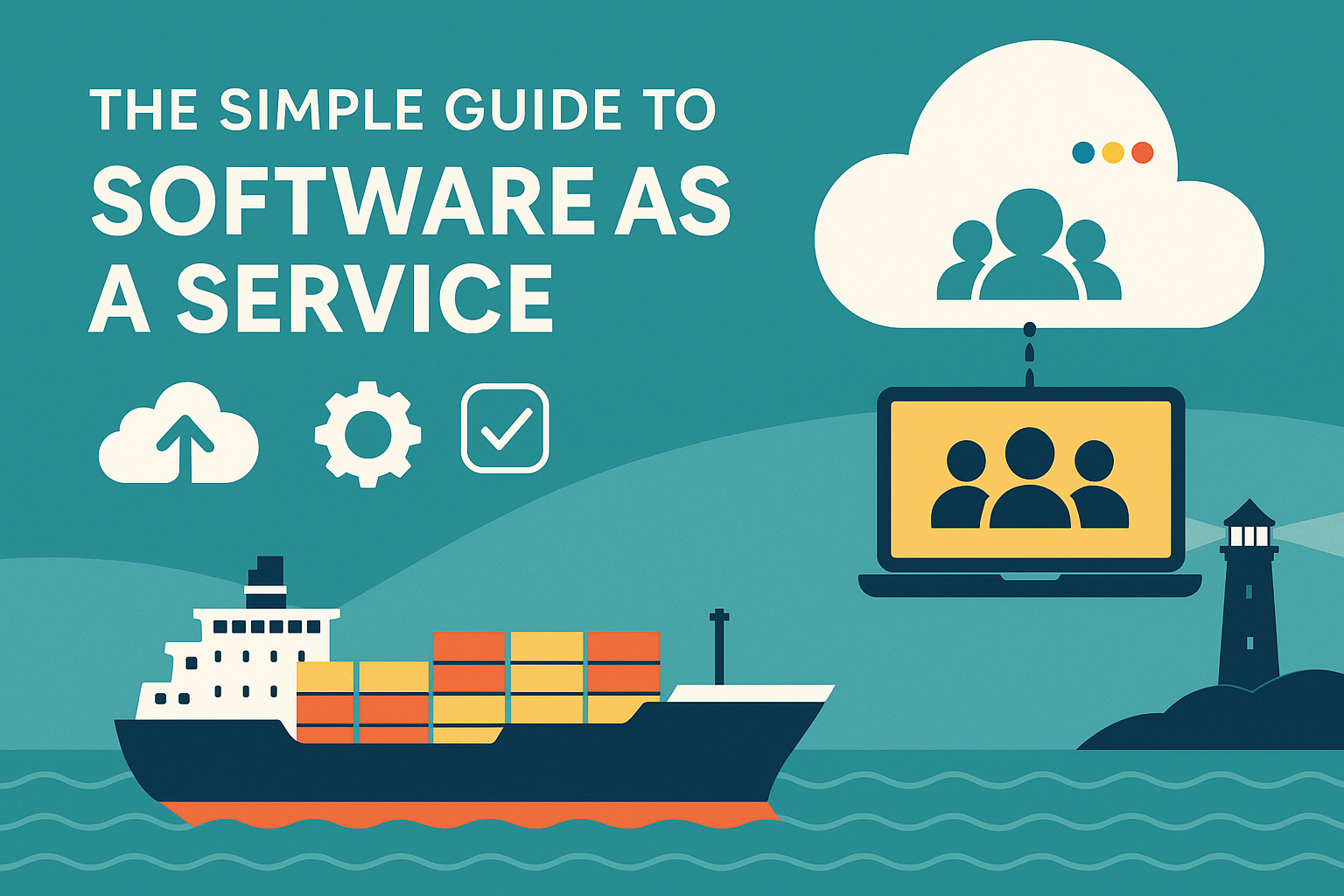Why You Should Track Your Applicants in Maritime Recruitment

In the maritime industry, where precision and efficiency are critical, recruitment processes must be streamlined to ensure the right candidates are hired at the right time. With increasing competition for top talent, tracking your applicants effectively is no longer optional—it’s essential. Applicant Tracking Systems (ATS) have become indispensable tools for recruiters and hiring managers, helping them navigate the complexities of modern recruitment.
This updated guide explores why tracking applicants is vital for maritime recruitment in 2025 and how leveraging an ATS can transform your recruitment and hiring process.
What is an Applicant Tracking System (ATS)?
An Applicant Tracking System (ATS) is a recruitment tool designed to simplify and automate the hiring process. It helps recruiters manage everything from posting jobs to screening candidates, scheduling interviews, and onboarding new hires. By integrating digital workflows, an ATS replaces outdated manual processes, saving time and improving accuracy.
Here’s how an ATS works in practice:
- Job Posting: The recruiter enters job details into the system, including position requirements, skills, and experience.
- Candidate Profile Creation: The ATS creates an ideal candidate profile based on the job description.
- Resume Parsing: As applications are submitted, the system scans resumes, extracting key information like skills and qualifications.
- Ranking Candidates: The ATS ranks applicants based on how closely they match the ideal profile.
- Tracking Progress: Recruiters can monitor where each candidate is in the hiring process—from application to interview scheduling to offer acceptance.
By centralizing these tasks, an ATS ensures that no applicant falls through the cracks and that recruiters can focus on making informed decisions.

Why Tracking Applicants Matters in Maritime Recruitment
The maritime industry faces unique challenges when it comes to recruitment. Tight crew change schedules, compliance with international regulations, and global hiring needs mean that every step of the recruitment process must be precise and efficient. Tracking applicants effectively ensures that these challenges are met head-on.
Faster Time-to-Hire
In maritime recruitment, delays can be costly—both financially and operationally. An ATS significantly reduces time-to-hire by automating repetitive tasks like resume screening and shortlisting candidates. For example:
- Instead of manually sorting through dozens (or even hundreds) of resumes for multiple job postings, an ATS uses algorithms to identify qualified candidates instantly.
- Recruiters can quickly move top talent through the pipeline without wasting time on unqualified applicants.
This speed is particularly important when filling urgent roles such as officers or engineers needed for upcoming crew changes.
Improved Organization and Efficiency
Managing multiple job postings across various platforms can quickly become chaotic without a proper tracking system. An ATS centralizes all applicant data in one place, making it easy for recruiters and hiring managers to stay organized.
For instance:
- Resumes are stored in a searchable database, allowing recruiters to revisit past applicants when new roles open up.
- The system provides real-time updates on where each candidate is in the recruitment process—whether they’ve been shortlisted, scheduled for an interview, or offered a contract.
This level of organization not only saves time but also ensures that no candidate is overlooked.

Enhancing Your Employer Brand
Your employer brand plays a crucial role in attracting top talent. A poorly managed recruitment process—such as delayed responses or unclear communication—can harm your reputation among job seekers. An ATS helps maintain a positive employer brand by ensuring a smooth and professional experience for candidates.
With features like automated email updates and self-service interview scheduling, candidates remain informed throughout the process. This transparency fosters trust and positions your company as an employer of choice in the competitive maritime industry.
Reaching More Job Seekers Through Job Board Integration
One of the standout features of modern ATS platforms is their ability to integrate with multiple job boards simultaneously. Instead of manually posting jobs on individual platforms, recruiters can distribute their listings across several job boards with just one click.
Benefits of job board integration include:
- Wider Reach: Your job postings are seen by more potential candidates.
- Consistency: Job descriptions remain uniform across all platforms, reinforcing your employer brand.
- Time Savings: Recruiters spend less time managing postings and more time engaging with candidates.
Additionally, many ATS systems now integrate with social media platforms like LinkedIn or Facebook, allowing companies to tap into passive talent pools—candidates who may not be actively searching but could be interested if approached with the right opportunity.

Building a Robust Talent Pool
An often-overlooked advantage of using an ATS is its ability to help you build and maintain a talent pool—a database of qualified candidates who may not be hired immediately but could be perfect for future roles.
For maritime recruiters dealing with cyclical hiring needs or unexpected crew shortages, having access to a pre-vetted pool of candidates can significantly reduce time-to-hire. The system allows you to:
- Easily search for candidates based on specific criteria like certifications or experience levels.
- Re-engage with past applicants when new opportunities arise.
- Maintain long-term relationships with promising talent through regular updates or newsletters.
This proactive approach ensures you’re always prepared to fill critical roles quickly.
Data-Driven Recruitment Decisions
Modern ATS platforms don’t just track applicants—they provide valuable insights into your recruitment process. Analytics tools allow you to measure key performance indicators (KPIs) such as:
- Time-to-Hire: How long it takes to fill positions.
- Cost Per Hire: The expenses associated with recruiting new employees.
- Source Effectiveness: Which job boards or platforms yield the best candidates.
- Candidate Drop-Off Rates: Where applicants are exiting the process so you can make improvements.
Armed with this data, recruiters can refine their strategies to attract better candidates while reducing costs and inefficiencies.

Maritime-Specific Benefits of an ATS
The unique demands of maritime recruitment make an ATS even more valuable:
- Crew Change Management: An ATS helps ensure that seafarers are available at the right time for crew changes—a critical factor in avoiding operational delays.
- Certification Tracking: Maritime roles often require specific certifications or licenses. An ATS can track these qualifications automatically, ensuring compliance with international regulations.
- Global Recruitment: With features like language localization and timezone management, an ATS simplifies hiring across borders for multinational shipping companies.
These capabilities make it easier for shipowners, manning agents, and crew managers to stay organized while meeting industry-specific requirements.
Conclusion
In 2025, tracking applicants effectively isn’t just about saving time—it’s about staying competitive in a demanding industry. An Applicant Tracking System transforms your recruitment process by automating repetitive tasks, improving organization, enhancing your employer brand, and providing actionable insights through analytics.
From posting jobs on multiple job boards to building long-term talent pools and streamlining interview scheduling, an ATS equips your recruiting team with everything they need to succeed. For maritime companies dealing with tight schedules and global hiring needs, these tools are invaluable.
By adopting an ATS tailored to maritime recruitment—like Martide’s crew management software—you’re not just filling positions; you’re building a stronger workforce that supports your company’s success at sea.
Ready to take your maritime recruitment strategy to the next level? Contact Martide today to learn how our solutions can help you attract top talent while simplifying your recruitment process!
This blog post was originally published on November 21st 2022 and was rewritten and updated on June 15th 2025

Gavin Hirst
Gavin is a contributing writer to the Martide blog who covers topics ranging from life at sea to maritime crew management software. A native Brit who is now based in Auckland, NZ, Gavin is also an SEO expert and partner in a successful digital marketing agency that has offices in New Zealand and the United Kingdom.
New Zealand



